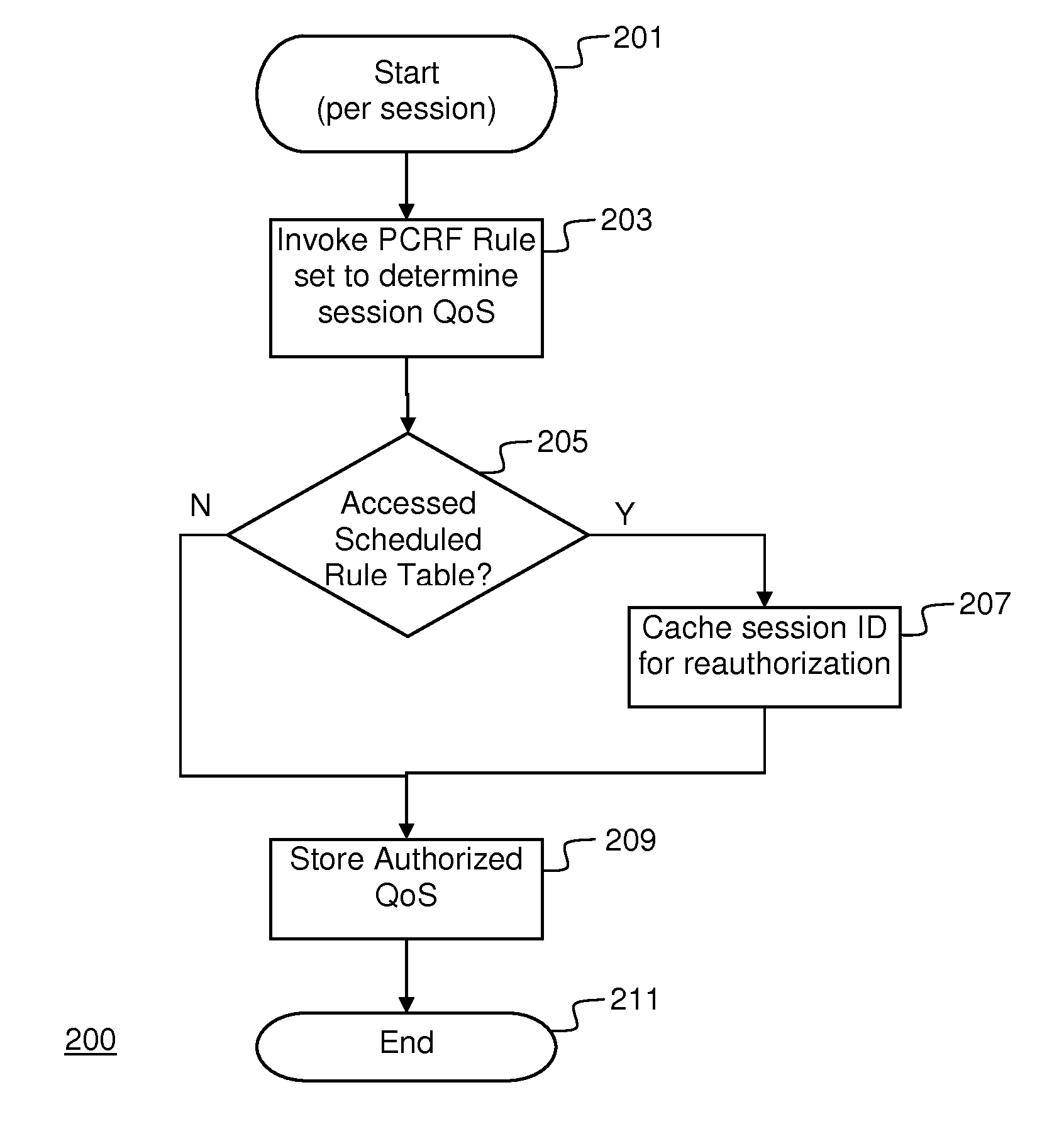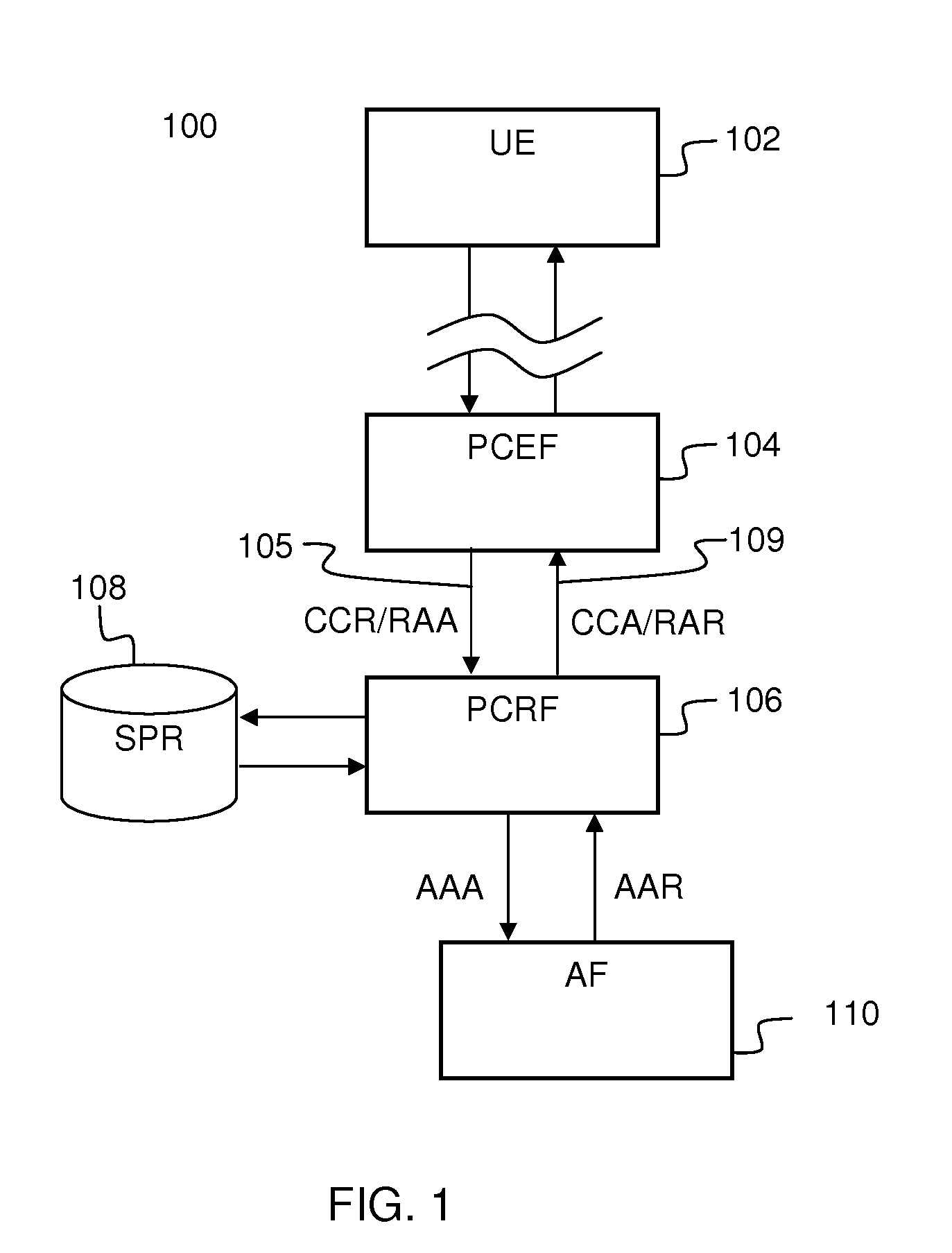QOS control in pcrf based on usage and time of day
a technology of pcrf and qos control, applied in the field of packet switching communication networks, can solve the problems of significantly increasing usage consumption of wireless networks, and no efficient way to address traffic peak load
- Summary
- Abstract
- Description
- Claims
- Application Information
AI Technical Summary
Benefits of technology
Problems solved by technology
Method used
Image
Examples
Embodiment Construction
[0028]In wireless networks, some subscribers who use the network heavily may create network congestion, preventing other subscribers from receiving their desired QoS. A similar problem may occur during certain time periods when many users attempt to receive high bandwidth services. Embodiments of the present invention address the need for good and fair control of network traffic by managing the QoS of a subscriber based on each subscriber's usage and time-of-day information, thereby providing a fine grained control on network traffic.
[0029]FIG. 1 illustrates a simplified block diagram of an LTE system 100. User Equipment 102 communicates with a PCEF function 104, which can be part of a Packet Data Network-Gateway (PDN-GW) (also referred to as a packet gateway (PGW) node), to initiate a request for service. The PCEF generates a Credit Control Request (CCR) message, such as CCR 105, requesting an appropriate allocation of resources and forwards the request to PCRF node 106. The CCR me...
PUM
 Login to View More
Login to View More Abstract
Description
Claims
Application Information
 Login to View More
Login to View More - R&D
- Intellectual Property
- Life Sciences
- Materials
- Tech Scout
- Unparalleled Data Quality
- Higher Quality Content
- 60% Fewer Hallucinations
Browse by: Latest US Patents, China's latest patents, Technical Efficacy Thesaurus, Application Domain, Technology Topic, Popular Technical Reports.
© 2025 PatSnap. All rights reserved.Legal|Privacy policy|Modern Slavery Act Transparency Statement|Sitemap|About US| Contact US: help@patsnap.com



